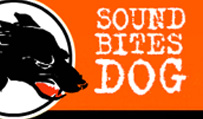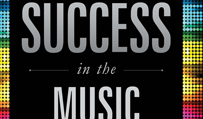If you’ve never played guitar in an alternate tuning it can seem a little formidable and even counter-intuitive at first. Why spend all that time mastering the guitar in standard tuning only to throw everything you know about fingerings, positions, chords shapes, etc. out the window? Well, because it can be fun and creative, unleashing whole new ideas and songs; and for every disadvantage there is a cool advantage. For example, altered tunings tend to provide huge open-string chords that sound amazing and yet use very simple fingerings.
Joni Mitchell (the queen of altered tunings) said to me, “If you think you’ve figured out my chords but the fingerings are hard, then you’ve got the wrong tuning.” Plus, if you are a songwriter you may find that every tuning delivers its own song to you. So here are five amazing songs that you can use to begin exploring the unlimited applications of altered tuning. Notice we have not provided standard notation, just diagrams and TAB. This is because in altered tunings, it becomes very difficult to identify notes from standard notation.
1. Joni Mitchell - “Big Yellow Taxi”
Let’s start with one of Mitchell’s earliest forays into altered tuning. “Big Yellow Taxi” is played in open E tuning (the guitar is tuned to an E chord): E – B – E – G# – B – E. The guitar part is basic, straight-up rock & roll rhythm guitar, but by using the open tuning, Mitchell achieves a very big sound with a very simple “one finger” alternating pattern to create the rhythm part.
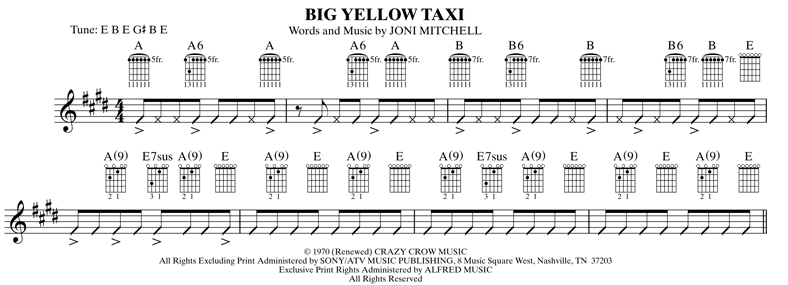
Hot tip: E tuning puts a lot of pressure on the strings so you can tune to open D instead (D – A – D – F# - A – D). The pattern will sound exactly the same but a whole step lower, and your guitar will thank you for it. You can always capo the 2nd fret to match the key of the recording. Also, “Open D” and “Open E” are very popular slide guitar tunings.
2. The Rolling Stones - “Brown Sugar”
Keith Richards discovered “Open G” tuning (D – G – D – G – B – D) in 1969 after hearing blues-great Ry Cooder perform. He puts it to brilliant use in this excerpted introduction from “Brown Sugar.” Keith often removes his low 6th string when in G tuning, using only five strings with G in the bass. However, that is not necessary to play any open G tuning patterns.
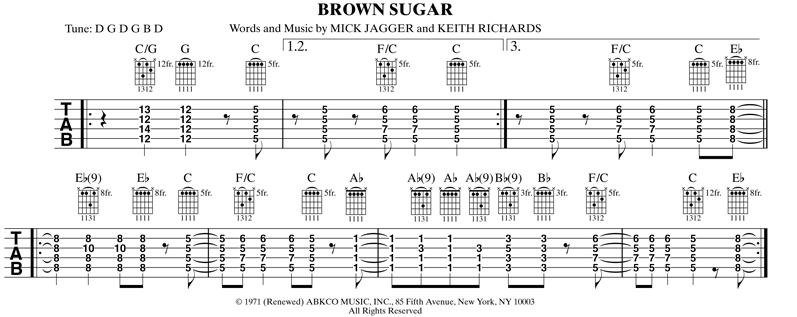
Hot tip: In “G tuning” the middle 4th–2nd strings (D – G – B ) are the same as in standard tuning; which means chord shapes on the middle strings are the same in both tunings, only the top and bottom notes change.
3. Led Zeppelin - “Bron-Yr-Aur”
Now let’s get a little further “out there.” Led Zeppelin’s Jimmy Page used a fascinating C6 tuning (C – A – A – G – C – E) for his classic solo guitar instrumental “Bron-Yr-Aur.” Here is the Intro and the first few bars of the A section. Notice how Jimmy opens with a simple arpeggio that highlights the sound of the C tuning.
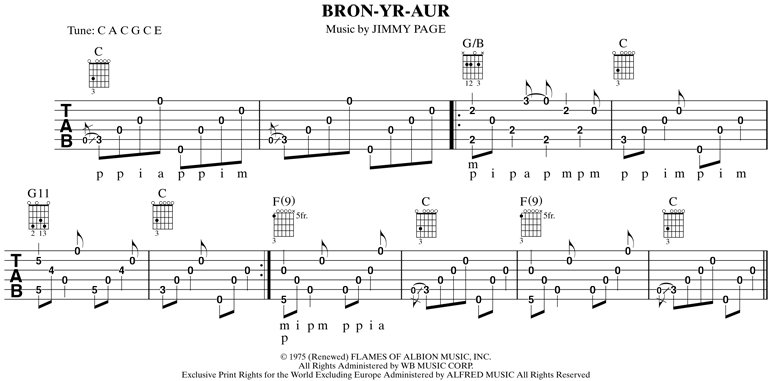
4. Led Zeppelin - “Kashmir”
In this next example, also from Page, he explored the exotic and Middle Eastern possibilities inherent to DADGAD tuning (D – A – D – G – A – D). Notice how the fingerings are simple two-note shapes on strings 5 and 3, with the open 4th string in each fingering. The low D provides a nice pedal tone.
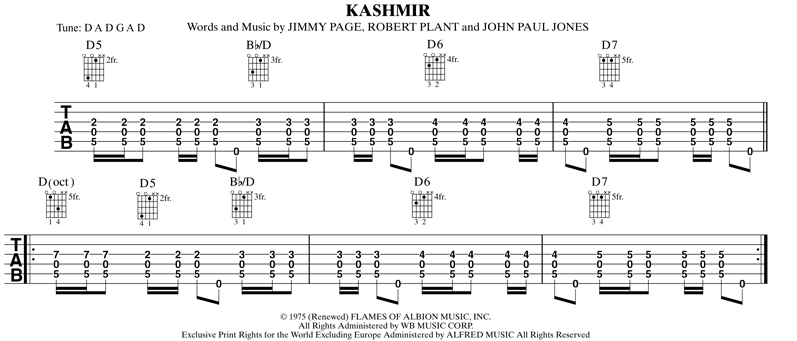
In each of the first three examples the tuning was based on a chord. In other words, when strummed, the open strings sound a full chord—either E, D or G. While DADGAD is not a chord, it is a common altered tuning that provides an ambiguous sound that can be easily manipulated to be major or minor sounding. This next example shows how Joni would experiment and come up with a tuning that is totally unique and not chord-based.
5. Joni Mitchell - “I Had a King”
This is the opening song from Mitchell’s first album, Clouds, tuned E – B – E – E – B – E (unison E notes in the middle). She then placed a capo at the 5th fret to raise the pitch of the song. Below is the Intro to the song. Notice how it is based on just one chord shape that looks like a standard-tuned E major fingering. By shifting that fingering between the 4th and 2nd positions she produces some beautiful chordal colors.

Hot tip: To identify her tunings Joni indicates them based on the bottom string and then she frets what the remaining strings would be tuned to. For example, in this system standard tuning would be E – 5 – 5 – 5 – 4 – 5. The tuning for this song would be E – 7 – 5 – 0 – 7 – 5.
By Aaron Stang
Sponsored by Alfred Music
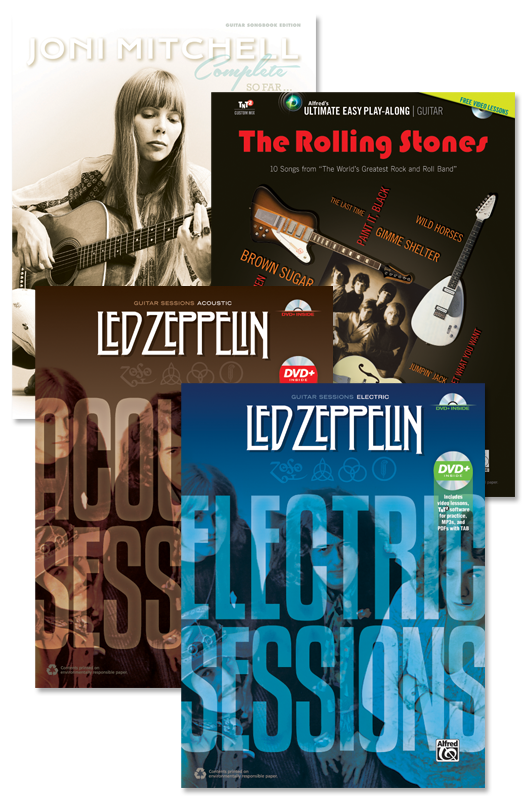 For further study you can learn all these songs from these great publications available from Alfred Music:
For further study you can learn all these songs from these great publications available from Alfred Music:
The Rolling Stones Ultimate Easy Play-Along
Led Zeppelin Acoustic Sessions
Led Zeppelin Electric Sessions
About Aaron Stang
Aaron Stang is Senior Director of Popular Music for Alfred Music. His numerous guitar publications include The 21st Century Guitar Method and Sound Innovations for Guitar. Aaron is a featured artist on the CD Henry Mancini, Pink Guitar; winner of the 2005 GRAMMY Award® for Best Pop Instrumental Album. He has produced hundreds of songbooks for artists ranging from Led Zeppelin to Green Day. Aaron’s DVD production, Killer Piano, featuring rock and roll legend Jerry Lee Lewis, was premiered at a six-day tribute to Jerry at the Rock and Roll Hall of Fame in 2007.

